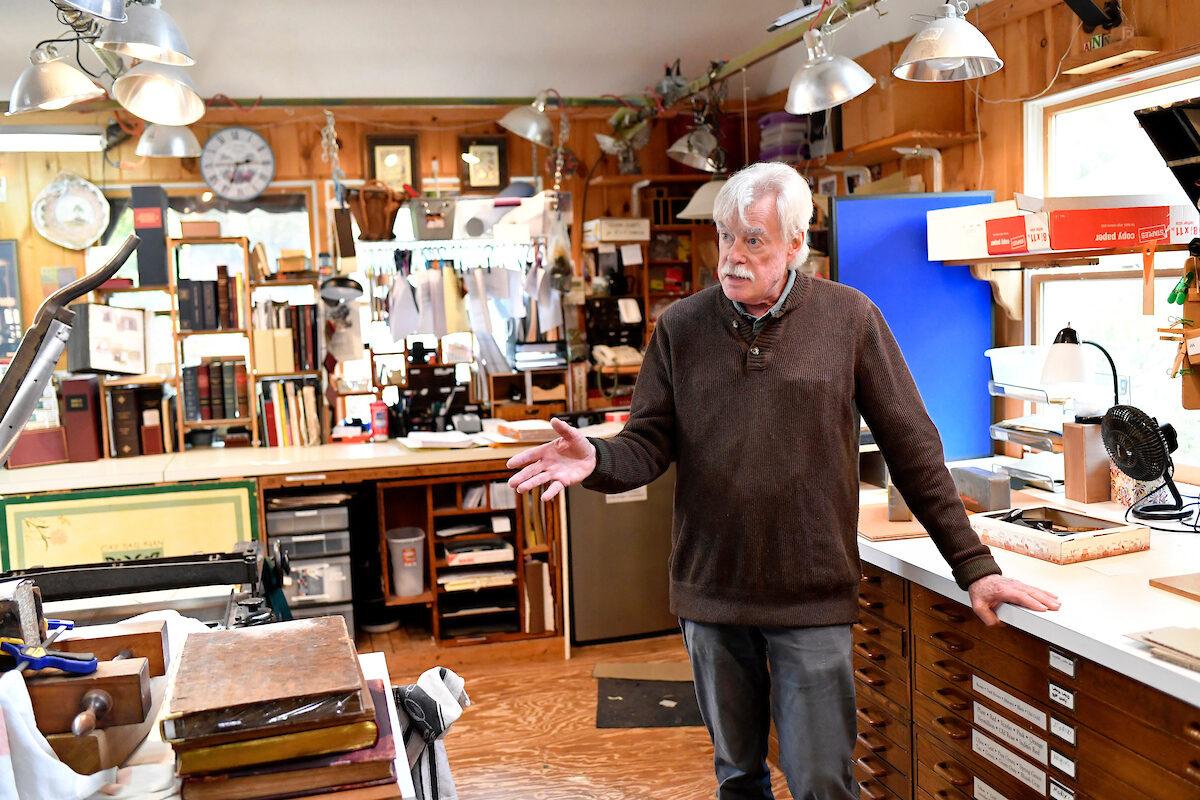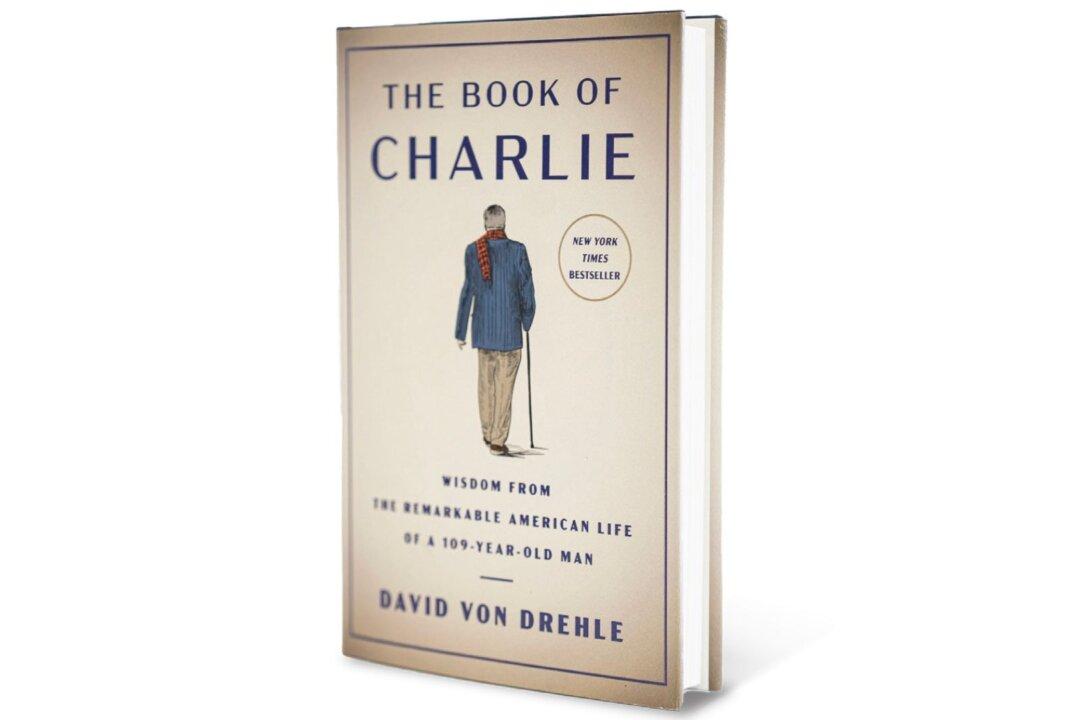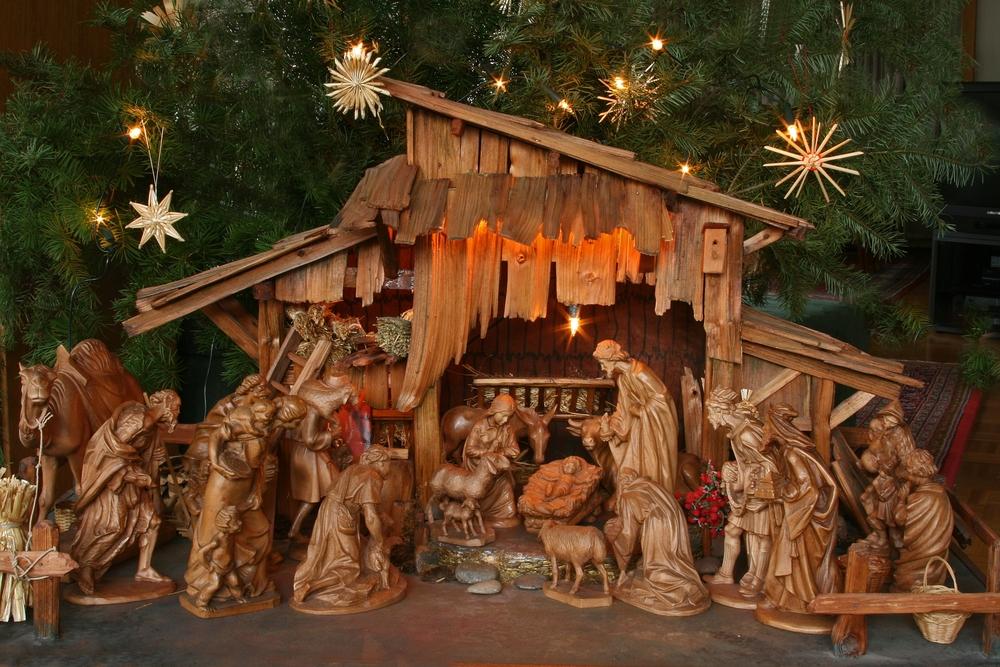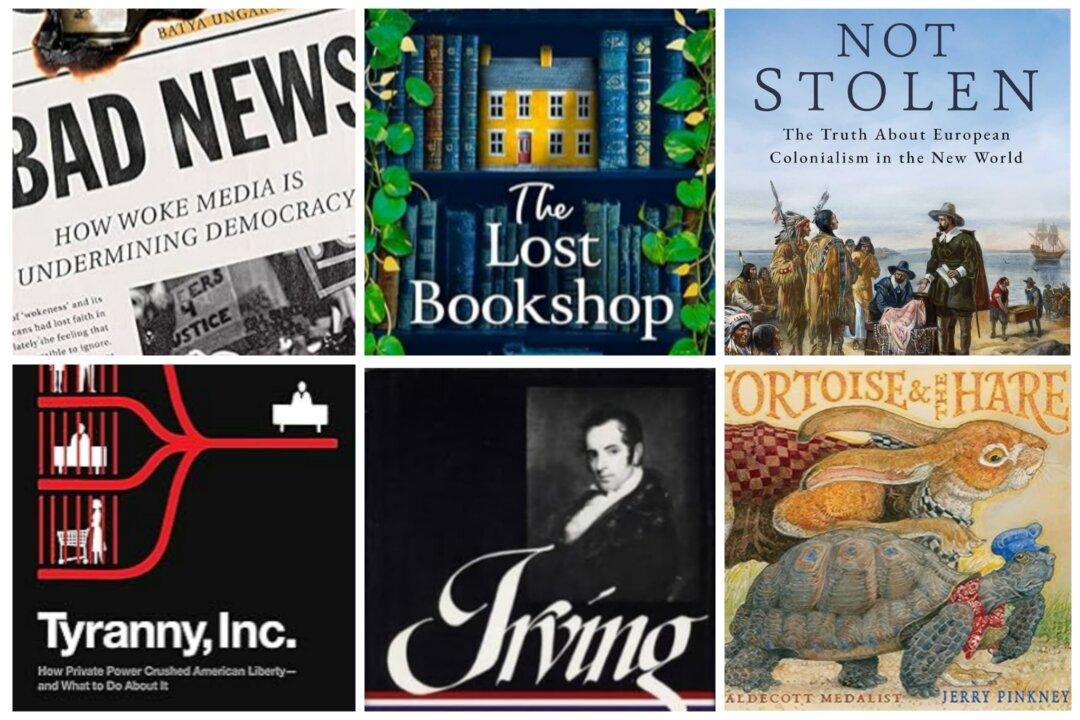When my son Douglas was very young, one of our bonding rituals was reading. He learned to read at an early age but always enjoyed curling up next to me or having me read to him by the side of the bed as he gazed toward the ceiling in rapt attention.
When he was about 10, we decided to tackle Herman Melville’s “Moby Dick.” Admittedly, we were going along fine with Captain Ahab and his quixotic quest for the great whale but got stuck when Melville threw in detailed descriptions of whale biology.
What enhanced our reading sessions was the book itself, an old, thick, volume printed in 1930 by Random House.
The pages are a vintage cream hue and filled with deep ebony-colored illustrations by Rockwell Kent. They look like etchings or block prints. They appear often enough throughout the elegant text—Monotype Fournier—to add some visual context to the classic story.
Sadly, the spine covering is torn and hangs limply. The silver stamped black cloth over board cover is faded and very tired.
The book belonged to my mother Aurora, Douglas’s grandmother, and was a gift to her in 1931.
This volume, so wrapped in soft and warm memories, has moved from shelf to shelf over the years.
What it needs is a refresh, a renewal in book body and spirit, a reinvention of its former glory—basically to be held without the fear of literally falling apart in your hands.
Our volume of “Moby Dick” is not alone. There are family Bibles, old cookbooks, personal journals, and countless other books that scream out for the tender attention that only skilled bookbinders can offer.
Their talents are finely honed and honored. They are traditional and elegant craftsmen to be treasured, their skill set to be revered and preserved.

Spirit of Tradition
It’s a setting where you might expect to see Harry Potter come out from the woods. The winding road flanked by tall trees takes you to a few wooden buildings. The main bindery, where the hands-on work is done, has high ceilings, large windows that let the sunlight flood in, and a network of shelves, tables, and tucked-away cubbies that house endless tools, papers, leathers, threads, and thin sheets of gold used for gilding.
It’s not Hogwarts School of Witchcraft and Wizardry, but magic happens here, no doubt.
Welcome to Cat Tail Run Hand Bookbinding located in Winchester, Virginia.
Named for a local stream, for more than 30 years, a spirit of tradition and pride has permeated the work within these walls to create custom bindings, clamshell boxes, and other protective book housings.
Professional and tender loving book restoration and conservation is their mantra; they’ve served individuals, institutions, and government agencies for decades.
They’re both bookbinders and book restorers.
The techniques used in their bindery have a deep history. Many of the methods used were developed over centuries, giving their finished product not only structural soundness but great aesthetic appeal.






